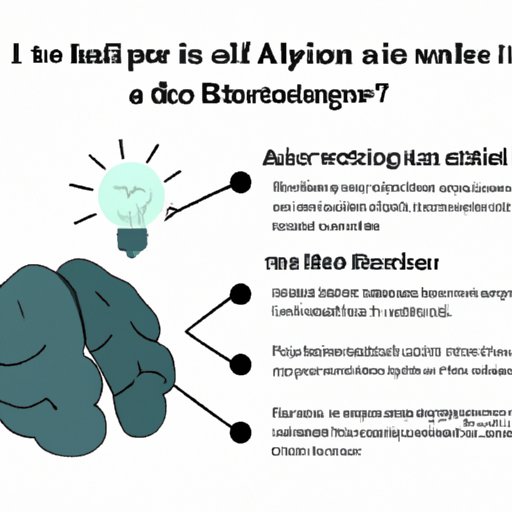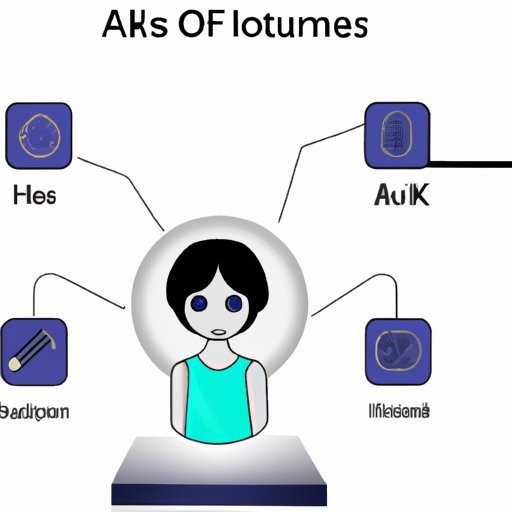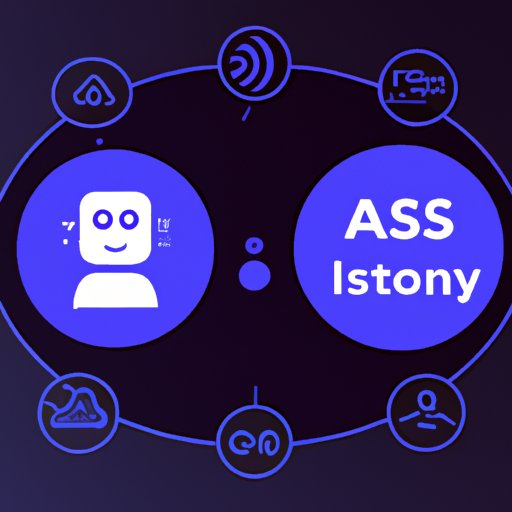Introduction
Artificial intelligence (AI) is a rapidly developing field that enables machines to simulate human behavior. From facial recognition to autonomous driving, AI has been used in many areas. An AI assistant is a type of AI system designed to interact with people in order to provide services or complete tasks. AI assistants are becoming increasingly popular, as they can provide personalized experiences for users and automate tedious tasks. In this article, we will explore the steps and challenges of creating an AI assistant.
Definition of an AI Assistant
An AI assistant is a computer program that uses natural language processing (NLP) to understand and respond to user requests. AI assistants are often voice-enabled and can be found in smartphones, virtual assistants, and other devices. They are designed to make everyday tasks easier by providing assistance, answering questions, and giving recommendations.

Benefits of Building an AI Assistant
Building an AI assistant offers many benefits. For businesses, AI assistants can help to reduce customer service costs and improve customer experience. For consumers, AI assistants can make daily tasks easier and more efficient. Additionally, AI assistants can provide personalized experiences for users, as they can remember user preferences and offer tailored recommendations.

Steps to Create an AI Assistant
Creating an AI assistant requires careful planning and execution. The following steps outline the process for building an AI assistant:
Gather Necessary Data
The first step in creating an AI assistant is to gather the necessary data. This includes audio recordings, text transcripts, and images. The data should be labeled and organized so that it can be used to train the AI system. Additionally, the data should be varied so that the AI system can learn to recognize different types of input.
Choose a Platform
Once the data is gathered, the next step is to choose a platform for the AI system. There are several AI platforms available, such as Microsoft Azure, IBM Watson, and Amazon Web Services. Each platform offers different features and capabilities, so it’s important to consider which one is best suited for the project.
Design the AI System
The next step is to design the AI system. This involves creating a user interface and determining how the AI assistant will interact with users. Additionally, the AI system should be designed to understand and respond to user requests accurately and efficiently.
Train the AI System
Once the AI system is designed, it needs to be trained using the data collected earlier. This involves using machine learning algorithms to teach the AI system how to interpret user input and generate appropriate responses. The training process can take some time, but it is essential for ensuring that the AI system works properly.
Test and Deploy the AI System
After the AI system is trained, it must be tested and deployed. Testing the AI system ensures that it is working correctly and responding accurately to user requests. Once the AI system is tested and approved, it can be deployed and made available to users.

Examples of Existing AI Assistants
There are several popular AI assistants currently available. Some of the most well-known AI assistants include:
Siri
Siri is Apple’s voice-activated AI assistant. It can answer questions, send messages, set alarms, and more. Siri is available on iOS devices and is also integrated into Apple’s HomePod smart speaker.
Alexa
Alexa is Amazon’s AI assistant. It can play music, control smart home devices, and answer questions. Alexa is available on Amazon Echo devices and other compatible products.
Google Assistant
Google Assistant is Google’s AI assistant. It can provide information, set reminders, and control smart home devices. Google Assistant is available on Android devices and Google Home speakers.
Comparing Different AI Platforms
When choosing a platform for an AI system, there are several factors to consider. Here is a comparison of three of the most popular AI platforms:
Microsoft Azure
Microsoft Azure is a cloud computing platform that provides AI services. It offers a wide range of AI services, including machine learning, natural language processing, and computer vision. Additionally, Azure offers scalability and flexibility, making it ideal for large projects.
IBM Watson
IBM Watson is an AI platform that offers a range of services, including natural language processing, machine learning, and computer vision. It is designed to be user-friendly and provides access to a library of pre-trained models. Watson is ideal for small to medium-sized projects.
Amazon Web Services
Amazon Web Services (AWS) is a cloud computing platform that offers AI services. It offers tools for machine learning, natural language processing, and computer vision. AWS is suitable for any size project and provides scalability, reliability, and security.
Challenges in Developing an AI Assistant
Developing an AI assistant can be challenging. Here are some of the challenges that may arise during the development process:
Cost of Development
Creating an AI assistant can be expensive. The cost of development depends on the complexity of the AI system and the platform chosen. Additionally, the cost of data collection and labeling can add up quickly.
Security and Privacy Risks
AI systems store user data, which can pose security and privacy risks. To ensure the safety of user data, developers must implement proper security measures, such as encryption and authentication.
Complexity of AI Algorithms
AI algorithms are complex and require a deep understanding of machine learning and natural language processing. Developers must have a strong knowledge of these fields in order to create an effective AI assistant.
Conclusion
Creating an AI assistant requires careful planning and execution. It involves gathering data, choosing a platform, designing the AI system, training the AI system, and testing and deploying the AI system. Additionally, there are several challenges that may arise during the development process, such as the cost of development, security and privacy risks, and the complexity of AI algorithms. With the right approach and resources, however, an AI assistant can be created successfully.
(Note: Is this article not meeting your expectations? Do you have knowledge or insights to share? Unlock new opportunities and expand your reach by joining our authors team. Click Registration to join us and share your expertise with our readers.)
